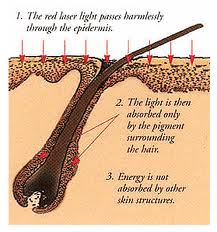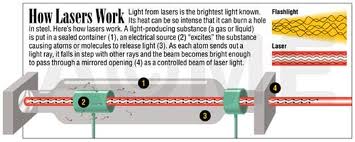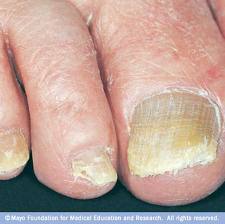

Don't we all have unwanted hair??.jpg) On the face maybe??
On the face maybe??
.jpg) Feel like you are wearing a sweater all the time due to unwanted back, arm, or chest hair??
Feel like you are wearing a sweater all the time due to unwanted back, arm, or chest hair??
.jpg) Tired of shaving those legs?? That's a lot of real estate to manage isn't it??
Tired of shaving those legs?? That's a lot of real estate to manage isn't it??
.jpg) Maybe you are tired of managing hair in those unmentionable places??
Maybe you are tired of managing hair in those unmentionable places??
Hair is a funny thing. It seems that where we want it, it doesn't grow, and where we don't want it, it grows like crazy. In society today, hair on the body is not a desirable thing.
Traditionally, hair has been managed by a number of means...all of them temporary.
.jpg) Tweezers have been a common tool along with razors, shavers, and even hot wax. Everyone has seen movie scenes where the star is punished by waxing large tracts of hair (40 Year Old Virgin)....it looks terribly painful and not much fun.
Tweezers have been a common tool along with razors, shavers, and even hot wax. Everyone has seen movie scenes where the star is punished by waxing large tracts of hair (40 Year Old Virgin)....it looks terribly painful and not much fun.
Now that laser and pulsed light technology is common, it can be used very effectively to reduce the volume and thickness of hair in almost every area. As we have been discussing in recent blogs, laser light effectiveness depends on wavelength. Hair grows from buds that contain pigment and stem cells.
.jpg) When the appropriate laser light and energy are used, the hair conducts heat into the bulb of the hair and when in a growth phase, the stem cells are heated and damaged. Over multiple treatments, the bulb is damaged to the point that it can no longer produce hair. Multiple treatments are required due to the fact that hair grows at different rates and some follicles are actively producing and some are dormant. New follicles can also generate in areas that have never produced hair.... i.e. the new hair that forms on your face or back that was never there before. Lasers and IPL can be used in essentally all areas to remove hair. The most effective areas are for body hair. Because it is usually dark and thick, it conducts the heat into the follicle most effectively. Body hair can usually be reduced by 80% or more in just six treatments 6 weeks apart. Facial hair is usually thinner and less dark. Therefore, it usually requires 9 treatments 6 weeks apart or more for lighter hair. Very light white hair is usually not conducive to laser as it reflects all light and does not conduct heat.
When the appropriate laser light and energy are used, the hair conducts heat into the bulb of the hair and when in a growth phase, the stem cells are heated and damaged. Over multiple treatments, the bulb is damaged to the point that it can no longer produce hair. Multiple treatments are required due to the fact that hair grows at different rates and some follicles are actively producing and some are dormant. New follicles can also generate in areas that have never produced hair.... i.e. the new hair that forms on your face or back that was never there before. Lasers and IPL can be used in essentally all areas to remove hair. The most effective areas are for body hair. Because it is usually dark and thick, it conducts the heat into the follicle most effectively. Body hair can usually be reduced by 80% or more in just six treatments 6 weeks apart. Facial hair is usually thinner and less dark. Therefore, it usually requires 9 treatments 6 weeks apart or more for lighter hair. Very light white hair is usually not conducive to laser as it reflects all light and does not conduct heat.
If you are tired of all of the other temporary fixes for unwanted hair.....try laser hair reduction.....it works. We use the Cutera system at Total Body Surgical. It is a time tested platform that uses both laser and IPL. This gives options for some of the more stubborn areas. It is also easy to afford. It used to be pretty pricey but now is in most peoples price range. At Total Body Surgical we charge by the treatment and have many options if multiple areas are to be treated. We charge $50.00 per treatment for a small area (face, underarms, bikini) and $75 for large areas (full back or chest or abdomen). Do the math and you will see how over time you actually save money over waxing, shaving or creams.
Call us today to make an appointment...918-786-7780 or fill out a contact form.
Don't forget our other special deals on liposuction, nail fungus, and lap bands!! 



.jpg) (Typical WWII era tattoo...single color, small in size, shallow depth of ink)
(Typical WWII era tattoo...single color, small in size, shallow depth of ink).jpg) (new tattoo...larger, more colors, broad spacing, deeper pigment)
(new tattoo...larger, more colors, broad spacing, deeper pigment)
.jpg) Austin Powers....demonstrated his ignorance of laser technology. Lasers have been a mystery to most!!
Austin Powers....demonstrated his ignorance of laser technology. Lasers have been a mystery to most!! .jpg?width=571&height=228&name=images_(9).jpg)




.jpg)